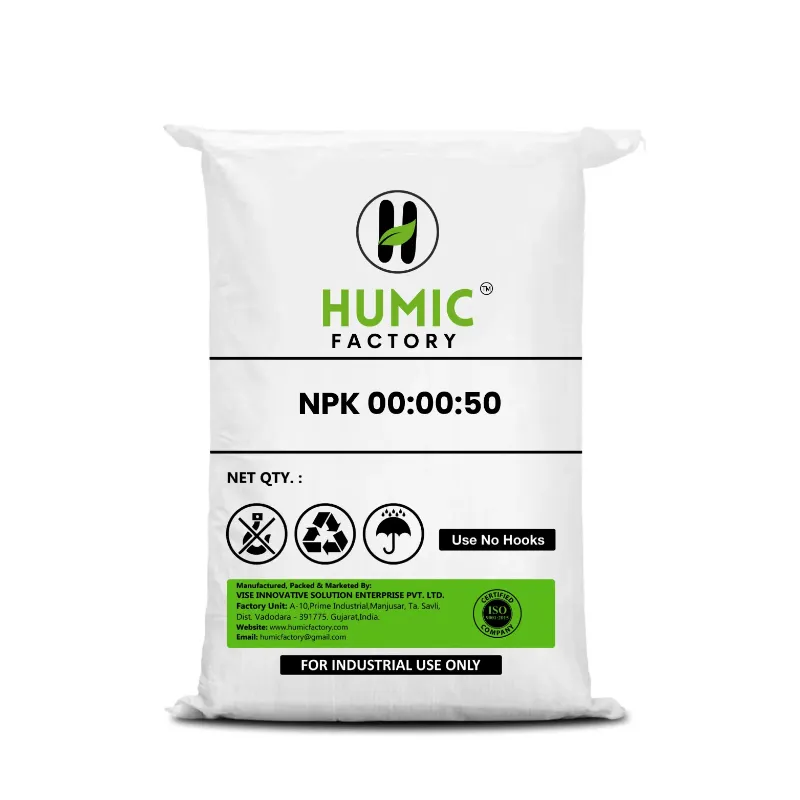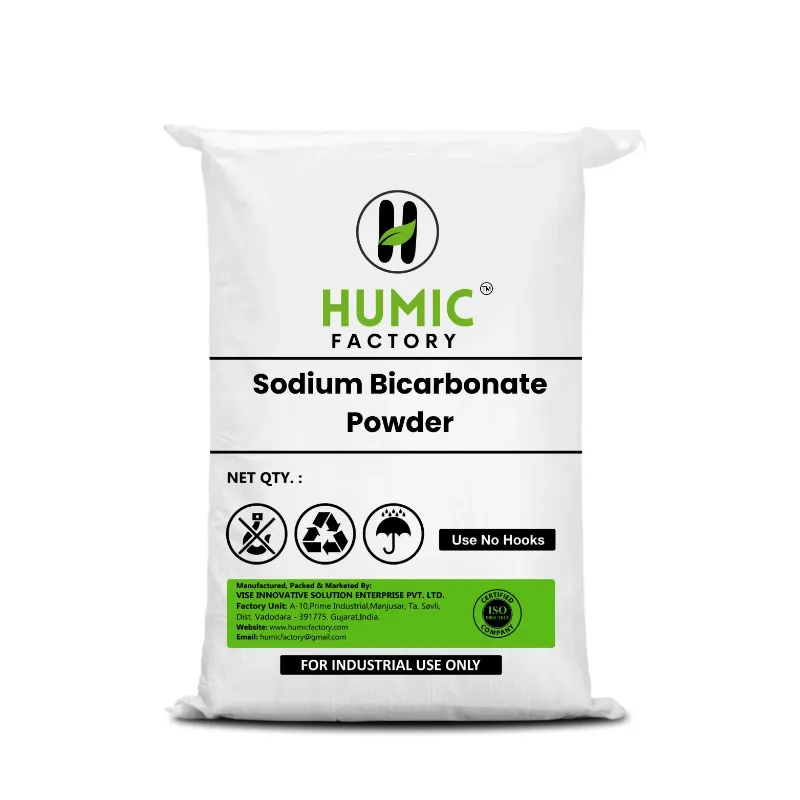For gardeners who want healthier plants and better soils, liquid humic acid is one of nature's best discoveries. It is an organic, humic compound that works under the soil surface to improve soil structure and nutrient absorption, while also supporting healthy plant growth.
Liquid humic acid increases the amount of nutrients that plants can absorb from the soil. Liquid humic acid binds mineral nutrients within the soils, making them much easier for plant roots to absorb. The result can be increased vibrancy of color and overall healthy growth of the plants. Regular use of liquid humic acid contributes to improved root growth establishing a stronger and deeper root system. Increased root systems allow plants to access water and soil nutrients more efficiently in times of stress such as when the growing season is dry.
When applied as a liquid fertilizer around the base of the soil, high concentration of humic acid can help break up compacted soil surface, improve soil aeration and improve water stewardship capacity of the soil. This offers roots and beneficial microbes healthier working environments.
Liquid humic acid helps plants withstand periods of environmental stresses like drought, extreme temperatures, and transplant shock. The natural bacterium contributes towards improved plant immunity, allowing crops delivered by you or your school communities to be resilient.
Introduction – Why Liquid Humic Acid is a Game-Changer for Gardeners and Farmers
Liquid humic acid is rapidly becoming a favorite among gardeners and farmers alike with its ability to promote soil health and soil quality without the use of synthetic chemicals. Liquid humic acid works by enhancing soil structure or increasing the soil's ability to naturally hold nutrients and water, providing the perfect environment for healthy plant roots.
- Promotes Stronger, Healthier Plants.
Liquid humic acid offers the long-lasting benefits of building up soil for crop resilience while many chemical fertilizers can provide a single short-term shot of benefit. Liquid humic acid can help develop soil structure and better root systems which contribute to a plants' ability to thrive even during drought, deal with pests and diseases.
- Great for Home Gardens Large Farm.
Humic acid liquid fertilizer can be applied by anyone, whether managing a tiny garden to farming quarters of hectares, will produce similar results in soil condition. Humic acid liquid fertilizer can accompany your choice of horticulture whatever it may be. Vegetable, bushes, trees, or turf, you will be able to use humic acid liquid fertilizer to best elevate their performance.
What is Liquid Humic Acid and Why It Matters
- Derived from Natural Organic Matter
Liquid humic acid, comes from decomposing plant and animal materials and is sourced from natural organic sources such as leonardite; humic acid is composed of humic substances—important components of healthy soil.
- Works at the Soil Level
Liquid humic acid, when applied to soil, assists with getting inactivate (or locked) nutrients available to be absorbed by the roots of plants. The more nutrients that can be assimilated, the better growth, the better yields and the overall health of plants.
- Convenient and Effective Application
Humic acid concentrate is simply diluted in water. You can then use it to make a soil drench, foliar spray, or input through a nursey irrigation system. This means it is easy for the novices or the profession to implement it in every care regiment.
- Environmentally-Friendly Alternative
Humic acid liquid fertilizer is an organic source of nutrients meaning that gardeners and farmers will not be using chemical fertilizers and also maintaining the long-term health of their soil; humic acid is also a sustainable system in modern agriculture.
The Role of Humic Substances in Plant Growth and Soil Health
- Facilitates Nutrient Accessibility for Plants
Humic substances such as humic acid liquid fertilizer can bind to nutrients in the soil, making them more readily available for plant uptake. Improved nutrient uptake leads to plant systems exhibiting more effectiveness in absorbing and using a higher concentration of nutrients, which supports faster and stronger plant growth and development.
- Supports Soil Structure and Water Storage
Humic acid liquid fertilizer provides improved texture of soil for better water retention and aeration. Through better tilth, plants suffer less stress during dry periods. Reduced stress occurs because plant roots are able to more easily access water in the soil.
- Increases Microbial Activity
Liquid humic acid favors the important populations of beneficial microbes associated with organic soils. Anaerobic microbes are even stimulating benefical aerobic microbes for the breakdown of further organic matter. This recycling of organic matter starts giving more nutrients while creating a living ecosystem with soil.
For lawns using liquid humic acid for lawns, grass experiences a thicker, greener growth and subsequently, the development of improved roots systems that contribute to drought protection and reduce application of chemical treatments to lawns.
The Science Behind Liquid Humic Acid and How It Works
Liquid humic acid is a potent organic supported-used material that has a central role in improving soil quality, increasing availability of soil nutrients, and improving plant performance. It is made from the natural decomposition of plant and animal matter - always by inorganic substances such as leonardite - as material, it is comprised of a combination of different humic substances: humic acid, fulvic acid, and various trace minerals.
How Liquid Humic Acid Enhances Nutrient Absorption
Liquid humic acid acts as a binding agent to minerals and nutrients that either have been inaccessible or are typically immobilized in soil. Thus, it provides means for unavailable natural nutrients -such as nitrogen, phosphorus, potassium, and even other micronutrients - to become available for uptake by plant roots. With better access to soil nutrients in liquid form, plants will become healthier and grow stronger.
It has been shown that the application of liquid humic acid will enhance nutrient uptake by plants; liquid humic acid acts as a natural chelating agent, combined with nutrients it allows for biochemical movement into plant roots without pathogen competition. This, in turn, encourages superior vegetative and reproductive growth - so more colored or vibrant leaves, tougher stems, and improved fruit and flower production.
Liquid Humic Acid’s Impact on Root Development and Soil Structure
Encourages Deep and Healthy Root Development Healthy roots are vital for the plant to survive and thrive. Formulation with liquid humic acid encourages roots to elongate and branch out, which means that a greater volume of soil can be explored for water and nutrients. A more extensive root system gives the plant a greater resistance through more adversity, even in a poor soil.
- Enhances Soil Texture and Aeration Humic acid concentrate can facilitate the decompaction of dense soils, enhancing aeration and drainage. The improved soil becomes less dense, allowing for more oxygen to reach the roots while simultaneously trapping just enough moisture to provide the ideal environment for plant growth.
- Humic acid liquid fertilizer can provide user benefits for the plant while also contributing to the overall soil structure for prolonged periods of time. Think of it as taking dry hard soils and improving them to fertile, loose soils rich in nutrient material.
Stimulating Microbial Activity and Improving Soil Fertility
- Promotes Beneficial Microbial Growth: Microorganisms are extremely important to soil health. Liquid humic acid feeds these microbes, promoting increase in growth and activity. This leads to an increase in the breakdown of organic matter and further release of nutrients for the plants that need it for growth.
- Creates a Balanced Soil Ecosystem: As microbial activity improves, we are actually creating a living, actively functioning ecosystem with plants, and microorganisms coexisting. An added benefit from this living soil is an accumulation of natural resistance to soil disease, improved natural nutrient cycling and the ability for the soil to sustain health and fertility.
- Enhances the Condition of Lawns and Turf: Liquid humic acid for lawns doesn't just improve grass performance, it improves the health of the soil underneath it. Healthier soils produce greener, and thicker lawns, with stronger roots and increased resistance to heat, drought and stress.
Top Benefits of Using Liquid Humic Acid in Your Gardening Routine
Liquid humic acid has become a must-have component for farmers or gardeners trying to improve their soils and plant health organically. The impact of liquid humic acid is considerable in both soil and in plants—engineered to create stronger, healthier than ever before, and resilient gardens.
Increased Crop Yield and Plant Growth
Liquid humic acid assists plants in absorbing more nutrients by unlocking minerals that are already present in soil, so plants have access to what they need to grow quicker, stronger and healthier.
- Stronger Roots with Thicker Plants: Plants with deeper root systems can easily take up more water and nutrients which means they can boast thicker foliage, more color-pertinent flowers, and yield more fruits and vegetables.
- Stimulates Early Stage Growth: Humic acid liquid fertilizer encourages seedling roots and shoot to burgeon quickly so plants can establish themselves as quickly as possible, once they have been transplanted.
Boosting Plant Immunity and Stress Tolerance
- Strengthens Plant Natural Defenses: Liquid humic acid will give plants the ability to withstand environmental stress caused by heat, cold, wind, and poor quality soil. Because of health attributes of humic acid liquid plants are healthier and can naturally defend against environmental stressors.
- Decreased Susceptibility to Disease: When plants receive adequate nutrition from quality humic acid concentrate, and strong root systems, they are less susceptible to disease caused by nutritional deficiencies or poor immune responses.
- Reduces Pest Stress: Stronger, healthier, and better plants are less attractive to pests and can allow gardeners and landscapes to naturally reduce pest numbers without using a lot of pesticides.
Drought Resistance and Improved Water Retention
- Improves Soil Ability to Retain Moisture: Liquid humic acid can improve the soil structure so it maintains moisture better. This helps to keep a plant in constant moisture, even if there are gaps between watering, or if not raining for longer periods.
- Aquifer of Deep Roots: With deeper roots, a plant can use water stored lower in the soil. This allows a plant to survive much longer periods without water when it is hot or dry.
- Helps to Keep Lawns Green During Dry Weather: Liquid humic acid for lawns encourages grass health even in dry seasons, through improved retention of moisture and reducing heat stress.
Reducing Chemical Fertilizer Dependency
Humic acid liquid fertilizer makes existing fertilizers more effective by increasing nutrient availability. This means you can often use less fertilizer while still achieving better plant growth.
- Cuts Down on Synthetic Fertilizer Use
- By reducing the need for heavy fertilizer applications, liquid humic acid helps protect the environment from nutrient runoff and overuse of chemicals.
- Supports Organic and Eco-Friendly Gardening
- Gardeners who want to grow organically benefit from liquid humic acid concentrate as it works naturally without harming the surrounding ecosystem.
How to Apply Liquid Humic Acid for Maximum Results
Applying liquid humic acid correctly ensures your plants and soil benefit fully from its natural power. Whether you're using it in a home garden, farm, or lawn, knowing the best practices for application can dramatically improve results.
Liquid Humic Acid Application Methods for Gardens and Farms
- Soil Drenching: Soil drenching is ideal for directly improving soil structure and boosting root growth. Pour the diluted humic acid concentrate around the plant base to nourish the roots and surrounding microbes.
- Foliar Spraying: This method involves spraying a diluted solution onto the leaves. It allows plants to absorb nutrients quickly through their foliage, which is helpful during stress or early growth stages.
- Irrigation Integration: For larger farms, liquid humic acid can be added to drip irrigation systems. This ensures even distribution and saves labor time.
Foliar Spray vs Soil Drench: Which Method is Best?
When to Use Each
- Use foliar spray when your plants need an immediate boost (e.g., after transplanting or in heat stress). Use soil drench or irrigation application for long-term soil and root health, especially for liquid humic acid for lawns or large fields.
Dosing Guidelines and Frequency of Application
Proper dosing ensures you get maximum results without overuse. Here's a simple guideline:
- Always apply in early morning or late afternoon.
- Avoid applying before rainfall to prevent runoff.
- Shake well before use if using a humic acid concentrate.
Mixing Humic Acid Concentrate with Fertilizers and Water
Humic acid liquid fertilizer works synergistically with organic and chemical fertilizers. It increases nutrient availability and uptake efficiency.
Mixing Instructions
- Mix humic concentrate with water first before adding fertilizer.
- Use clean, chlorine-free water when possible.
- Stir well and apply immediately for best results.
Best Practices for Combination Use
- Avoid mixing with calcium nitrate or highly acidic solutions.
- For foliar use, always conduct a small patch test before large application.
Liquid Humic Acid vs Granular Form: Which Works Best?
Choosing between liquid humic acid and granular forms depends on your specific gardening or farming needs. While both offer significant benefits to soil and plant health, understanding their differences in action and application helps maximize their value.
Liquid Humic Acid – Fast Absorption for Quick Results
- Rapid Availability: Liquid humic acid is immediately available to plants. Once applied, it quickly penetrates the soil and enters the plant system through roots or leaves (in foliar sprays). This makes it ideal for quick fixes or stimulating rapid growth.
- Ideal for Lawns and Short-Season Crops: For fast-growing vegetation or turf management, liquid humic acid for lawns is particularly beneficial. It boosts chlorophyll levels, accelerates green-up, and supports fast nutrient uptake.
- Perfect Companion for Liquid Fertilizers: As a humic acid liquid fertilizer, it integrates well with water-soluble NPK blends, enhancing nutrient efficiency and reducing fertilizer burn risks.
Granular Humic Acid – Long-Term Soil Improvement
- Slow-Release Soil Enhancer: Granular humic acid is more stable and breaks down slowly, making it ideal for long-term soil conditioning. It supports microbial activity over time, improves soil structure, and enhances moisture retention.
- Best for Perennial Crops and Sandy Soils: Granules are perfect for deep soil improvement in orchards, vineyards, and fields. They're also highly effective in sandy or degraded soils, where water retention and structure are key.
- Application Simplicity: Granular humic acid is easy to apply using spreaders or by hand and doesn’t require dilution or mixing, making it convenient for bulk applications across large areas.
Choosing Based on Crop Type and Farming Goals
Here’s a comparison table to help guide your choice based on your agricultural needs:
Using Liquid Humic Acid for Lawns: Achieve Greener, Healthier Grass
Applying liquid humic acid is a simple yet powerful way to promote lush, vibrant, and healthy grass. It enhances soil structure, boosts root development, and improves the lawn’s ability to absorb nutrients and moisture. Whether you maintain a small backyard or manage a larger turf area, liquid humic acid for lawns can deliver visible improvements in weeks.
Benefits of Liquid Humic Acid for Lawns
- Promotes Deep Root Growth: Encourages deeper root systems, improving drought resistance and nutrient uptake.
- Enhances Nutrient Absorption: Works as a natural chelator, increasing the availability of micronutrients like iron, zinc, and magnesium.
- Improves Soil Health: Rebuilds organic matter, enhances microbial activity, and improves aeration in compacted soils.
- Quick Green-Up: When combined with your standard humic acid liquid fertilizer, results in rapid and lasting green color without excessive growth surges.
Application Timing and Frequency for Lawns
Proper timing maximizes the effectiveness of liquid humic acid applications. Here’s a quick guide:Frequency: Apply every 3–4 weeks during the growing season, or as per lawn conditions.
Compatibility of Humic Acid Liquid Fertilizer with Lawn Care Products
- Safe with Most Fertilizers
- Liquid humic acid is fully compatible with organic and synthetic fertilizers, especially NPK blends.
- Boosts Fertilizer Efficiency
- When used with a humic acid concentrate, it helps bind nutrients to the soil, reducing leaching and maximizing uptake.
- Pairs Well with Weed & Feed
- Can be used alongside weed control products without disrupting their function—just avoid applying on freshly treated weed spots to minimize runoff interaction.
The Environmental Impact of Using Liquid Humic Acid in Sustainable Agriculture
The use of liquid humic acid in farming isn’t just about better crops—it’s about caring for the planet. As a natural soil conditioner, humic acid liquid fertilizer plays a significant role in reducing environmental damage while improving long-term soil productivity. For those practicing eco-conscious farming or even lawn maintenance, the benefits of humic acid concentrate are far-reaching.
Supporting Eco-Friendly Farming and Biodiversity
Liquid humic acid stimulates microbial activity, which supports a diverse and thriving soil ecosystem. This biodiversity fosters natural pest control, healthy root systems, and better water retention.
- Promotes soil microorganisms
- Restores balance in degraded soils
- Reduces the need for synthetic inputs
These attributes make it ideal not only for agriculture but also for liquid humic acid for lawns, where chemical overload can damage insects and earthworms vital to lawn health.
Reducing Chemical Runoff and Soil Degradation
When traditional fertilizers are overused, they leach into waterways, causing pollution and eutrophication. Humic acid liquid fertilizer binds nutrients to the soil, preventing this runoff.This comparison shows why humic acid concentrate is a smarter solution for sustainable farming.
Regenerative Agriculture Solutions with Humic Substances
Humic substances, especially in liquid form, are at the heart of regenerative farming practices. They help regenerate topsoil, improve carbon capture, and restore degraded agricultural land.
Key advantages include:
- Carbon sequestration through improved organic matter
- Stronger root systems supporting crop resilience
- Sustainable soil cycles without synthetic dependency
These regenerative benefits also extend to turf care, making liquid humic acid for lawns a sustainable solution for long-term yard health.
FAQs
Q1. What are the main benefits of liquid humic acid?
Liquid humic acid improves soil structure, enhances nutrient uptake, boosts plant growth, and promotes microbial activity. It's ideal for both gardens and lawns.
Q2. How often should liquid humic acid be applied?
For best results, apply liquid humic acid every 2–4 weeks during the growing season. Frequency may vary based on soil type and crop needs.
Q3. Can I use humic acid concentrate directly?
No, humic acid concentrate should always be diluted with water according to label directions before use to avoid overapplication or root burn.
Q4. Is liquid humic acid good for lawns?
Absolutely. Liquid humic acid for lawns helps achieve greener grass, improves root development, and enhances soil health for thicker turf.
Q5. How does humic acid liquid fertilizer compare to granular forms?
Humic acid liquid fertilizer offers faster nutrient absorption and is easier to apply. Granular forms, however, provide longer-lasting soil conditioning benefits.
Conclusion – Start Reaping the Rewards of Healthier Plants with Liquid Humic Acid Today!
Liquid humic acid is more than just a soil additive—it's a complete solution for those who aim for healthier, stronger plants and long-term soil enrichment. Whether you're a hobby gardener or a full-scale farmer, integrating this organic powerhouse into your routine will yield visible, lasting results.
- Improves nutrient absorption and soil texture.
- Encourages deeper root development.
- Works for all types of soil and climates.
- Enhances overall plant vigor and yield.
Liquid Humic Acid as a Natural Growth Enhancer
Humic acid liquid fertilizer acts at the root level to break down nutrients in the soil, making them more available to plants. This not only enhances growth but also increases crop resilience to pests and weather stress.
Key Benefits:
- Activates beneficial microbes in the soil.
- Stimulates early-stage root formation.
- Safe and natural—free from synthetic chemicals.
- Promotes long-term soil vitality with every use.
A Key Component of Sustainable Gardening and Farming
In sustainable agriculture, liquid humic acid plays a central role. By reducing the need for synthetic inputs and fostering biodiversity, it supports a more balanced and eco-conscious way of growing.
How It Supports Sustainability:
- Reduces reliance on harsh chemical fertilizers.
- Helps in building carbon-rich soil.
- Restores degraded soils through natural enrichment.
- Pairs well with organic and regenerative farming practices.
Begin Your Garden Transformation with Liquid Humic Acid
Ready to elevate your gardening game? Incorporate liquid humic acid for lawns, vegetables, and crops to witness a dramatic difference in soil structure, root health, and plant productivity.
- Apply humic acid concentrate as a foliar spray or soil drench.
- Use liquid humic acid during early growth stages for a strong foundation.
- Pair it with compost or organic fertilizers for best results.
For lawn care, apply bi-weekly for a rich, green appearance.






